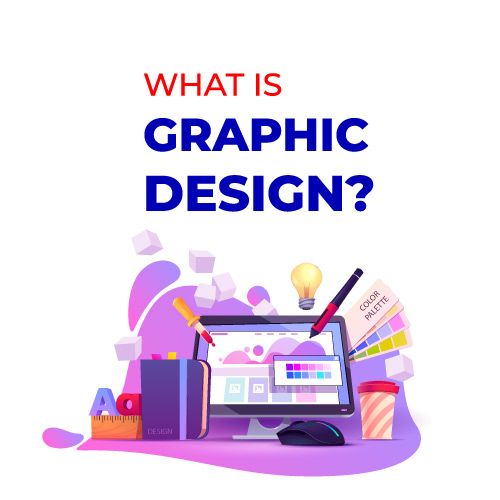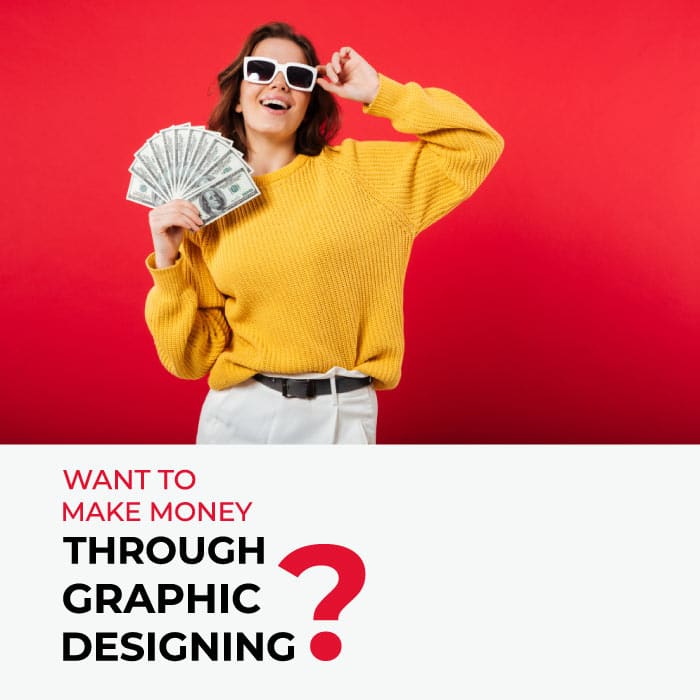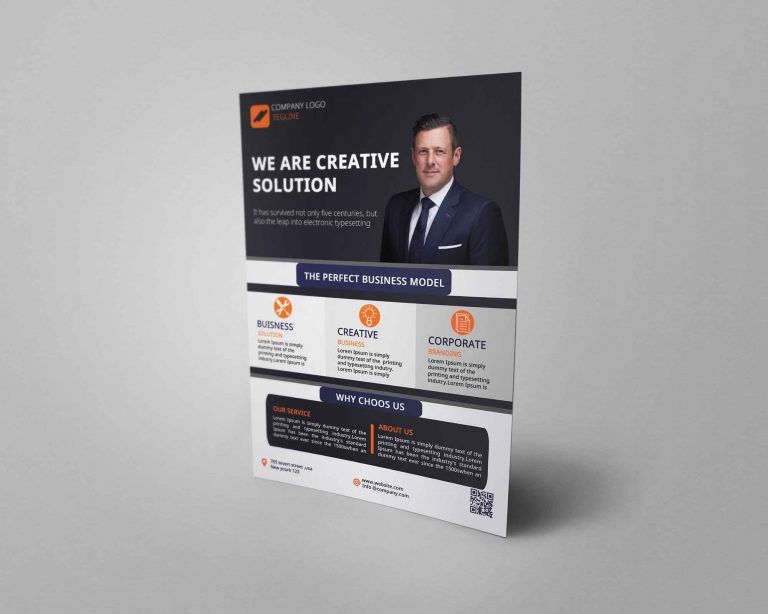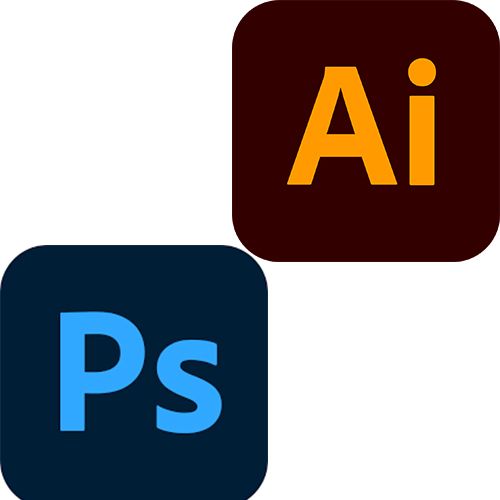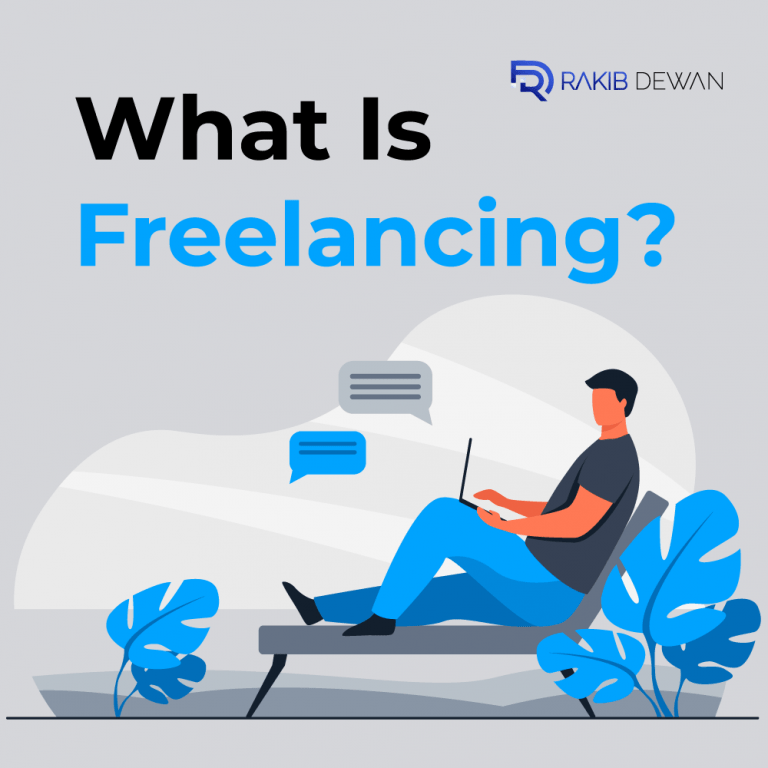What is graphic design?
Graphic design is a craft where professionals produce visual content to communicate dispatches. By applying visual scale and runner layout ways, contrivers use typography and filmland to meet druggies’ specific requirements and concentrate on the sense of displaying rudiments in interactive designs, to optimize the stoner experience.
Graphic Design is about Molding the User Experience Visually
Graphic design is an ancient craft, dating back once Egyptian hieroglyphs to at least- time-old delve oils. It’s a term that began in the 1920s’ print assiduity. It continues to cover a range of conditioning including totem creation. Graphic design in this sense enterprises aesthetic appeal and marketing. Graphic contrivers attract observers using images, color, and typography. Still, graphic contrivers working in stoner experience (UX) design must justify stylistic choices regarding, say, image locales and fountains with a mortal-centered approach. That means you need to concentrate on — and seek to empathize the most with — your specific druggies while you produce good-looking designs that maximize usability. Aesthetics must serve a purpose — in UX design we don’t produce art for art’s sake. So, graphic contrivers must fan into visual design. When designing for UX, you should:
1. Consider the information armature of your interactive designs, to ensure availability for druggies.
2. Influence graphic design chops to produce work that considers the entire stoner experience, including druggies’ visual processing capacities.
For case, if an else-pleasing mobile app can’t offer druggies what they need in several thumb-clicks, its developer/ s will have failed to marry graphic design to stoner experience. The compass of graphic design in UX covers the creation of beautiful designs that druggies find largely enjoyable, meaningful, and usable.

Graphic Design is Emotional Design
Although to work in the digital age means you must design with interactive software, graphic design still revolves around age-old principles. It’s pivotal that you strike the right passion with druggies from their first regard — hence graphic design’s correspondence with emotional design. As a graphic developer, also, you should have an established understanding of color proposition and how vital the right choice of color scheme is. Color choices must reflect not only the association (e.g., blue suits banking) but also druggies’ prospects (e.g., red for cautions; green for announcements to do). You should design with an eye for how rudiments match the tone (e.g., sans-serif sources for excitement or happiness). You also need to design for the overall effect and note how you shape druggies’ feelings as you guide them from, for a case, a wharf runner to a call to action. Frequently, graphic contrivers are involved in stir design for lower defenses. They will precisely cover how their workshop aesthetics match their druggies’ prospects. They can enhance their design usability in a flowing, flawless experience by anticipating the druggies’needs and mindsets. With stoner psychology in mind, it’s important to stay focused on some especially weighty graphic design considerations, videlicet these.
- Symmetry and Balance (including symmetry types)
- Flow
- Repetition
- Pattern
- The Golden Ratio (i.e., proportions of 1:1.618)
- The Rule of Thirds (i.e., how users’ eyes recognize good layout)
- Typography (encompassing everything from font choice to heading weight)
- Audience Culture (regarding color use—e.g., red as an alert or, in some Eastern cultures, a signal of good fortune—and reading pattern: e.g., left to right in Western cultures)
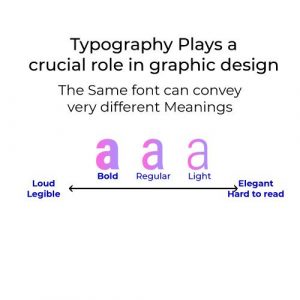
Overall, your charge — as far as graphic design goes in UX and UI design — is to display information harmoniously. You should ensure that beauty and usability go hand in hand, and thus your design can discreetly carry your association’s ideals to your druggies. When you establish a secure visual presence, you allude to druggies that you know what they want to do – not just because you’ve arranged aesthetically pleasing rudiments that are where your druggies anticipate to find them or help them intuit their way around, but because of the values which your designs display glass theirs, too. Your visual content will snappily decide your design’s fate, so be sure not to overlook the fewest detector that may put druggies off.
How to Change Your Career from Graphic Design to UX Design
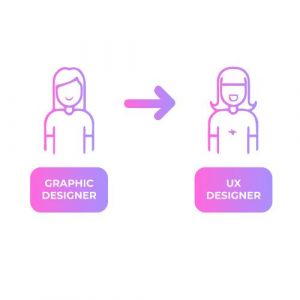
Still, it’s graphic design, If there’s an occupation that’s 100 linked with the public’s idea of what design is each about. From the familiar golden bends of the McDonald’s brand to the typography and colors of movie bills, graphic contrivers produce some of the most iconic and ubiquitous designs around us. So why would a graphic developer like you want to change your career to UX design? Well, for one, much can be said about the sense of satisfaction and fulfillment deduced from getting “ under the hood” of the products you work on rather than working on the surface. Likewise, according to PayScale, the average payment for a graphic developer in the United States is$ (1), but the same for a UX developer is a whopping$ (2).
Whatever the reason for the move, it’s clear that it can be a veritably satisfying bone. But how do you go about switching from graphic design to UX design? Let’s find out.
What is User Experience and User Experience Design?
The stoner experience (UX) is what a stoner of particular product gests when using that product. A UX developer’s job is therefore to produce a product that provides the stylish possible stoner experience. How does that be?
Well, it starts with a lot of exploration. You can’t produce anything of value to a stoner unless you understand what kind of problems they want to break and how you can break those problems, so that the stoner will want — or better still, need — your result. You can only get that understanding by interacting with druggies.
UX contrivers tend to be concerned with, as you can see from the image below, 3 primary factors the look of a product, the sense of that product, and the usability of that product.
The look of a product is each about creating a product that has visual appeal and which, in particular, harmonizes with a stoner’s values and captures the spirit of what they anticipate in that product. In other words, it has to not only look nice but look right too. In doing so, it establishes a bond of trust and credibility between the product and the stoner.
Next is the sense, which is really about developing products that are “ a joy to use”. That is, whether you’re interacting with them or replying to them, products should give an enjoyable experience and not just a functional bone.
Incipiently, usability is the foundation of the stoner experience. However, the experience of using it can noway be good, If a product isn’t usable. UX contrivers want to produce products that can, immaculately, be acclimatized to meet a stoner’s specific requirements, but which provides functionality that’s predictable.
Still, don’t worry! We’ve got a series of papers that may help you make up your mind — they examine some of the high-position crucial generalities of UX design in a bit further detail than we can then If you’re still doubtful of what UX design is each about.
- An Introduction to Usability
- Usability vs Desirability
- What is Interaction Design?
What Do Graphic Design and UX Design Have in Common?
Emotional Design
Graphic design is about emotional communication through typography, color, and images; serif sources and dark, duller colors elicit soberness, while san-serif sources and bright colors tend to bring out a sense of joy or excitement. Graphic contrivers are hence veritably frequently emotional contrivers who evoke specific responses in a stoner. UX design is also concerned with shaping the feelings of the stoner, although it tends to take a broader, big picture view of the entire stoner’s experience with the product. On top of fastening on the right typography and colors, UX contrivers are also concerned with stir design, the tone of the content, and information armature, among others.
Creative thinking
Graphic contrivers and UX contrivers are both inversely professed at creative thinking. For graphic contrivers, creating illustrations that cleave to conventions (and therefore communicate effectively) while retaining a sense of originality (to stand out among the competition) requires some serious creative and critical thinking. In the same way, UX contrivers have to produce products that break druggies’ problems — and occasionally, conventional results aren’t always the stylish or most applicable bones.
Prototyping
Graphic contrivers frequently produce mockups and wireframes of their designs previous to delivering a finished design. It gives a chance for guests to offer feedback on their designs and for them to ameliorate them without having to start from scrape. UX contrivers produce mockups and prototypes too, but these tend to be less focused on the “ look” of the product and further on the “ sense” of it. Is the prototype useful? Is it usable? Is it desirable? These are the questions a UX developer wants answers to.
The Differences between Graphic Design and UX Design
Stoner- concentrated vs pixel- concentrated
Graphic contrivers tend to pursue pixel perfection in their designs. Icing that textbooks have perfect kerning and colors conform to brand guidelines frequently takes up a significant portion of graphic contrivers’ jobs — and for good reason, too. UX contrivers, still, are primarily concentrated on druggies. They study the interface between druggies and the product, chancing ways to ensure that the product answers to the stoner’s key needs. And they do so by conducting a lot of exploration — by talking to and observing druggies, creating stoner personas and stories, doing usability testing on the products, and numerous further. Graphic contrivers looking to switch career tracks will need to do a substantial quantum of work chancing out how to conduct stoner exploration ( further about this a bit later on in the composition).
Iterative problem working
UX design is veritably much an iterative problem working process, and it can be veritably different from what you’re used to doing as a graphic developer. It begins with the identification of a problem; this frequently plants through stoner exploration, and if it’s not, it’ll also be verified through stoner exploration. There’s no point in working problems that druggies don’t watch about; they won’t pay to break those problems, and that means your company won’t make plutocrats.
From the problem identification stage, further exploration is conducted into how stylish to break the problem in a way that the stoner will be happy with — generally via compliances, checks, ethnographic studies, etc.
This exploration also informs the product’s design. Designs are also tested with druggies to see if the exploration led to the right results. The designs are constantly dinned until exploration confirms that they’re good enough.
Once this happens the product is launched, but the design process isn’t over. The design will be continually tested and stoner feedback will be taken, therefore beginning a new round of stoner exploration. Unborn advancements to the design will be made grounded on this feedback.
Multi-disciplinary vs specialized
Graphic design is a technical discipline, and there’s a certain position of artificer and set of technical chops ( similar as typography and color proposition) needed to produce great illustrations. UX design, on the other hand, is much further multi-disciplinary and involves numerous seminaries of knowledge. UX contrivers have to constantly learn about mortal psychology, commerce design, information armature, and stoner exploration ways, just to name a many, in order to produce the right results to a stoner’s problems. Don Norman, the man who chased the term “ Stoner Experience”, explains that stoner experience covers “ all aspects of the person’s experience with the system including artificial design plates, the interface, the physical commerce, and the primer.”
The Big Benefit of Graphic Design Experience when Moving to UX Design
Aesthetics
The biggest benefit for graphic contrivers moving to UX design is that they can make effects seductive. A veritably common misconception about UX design is that good usability trumps aesthetics. On the negative, good aesthetics have been planting to ameliorate the overall stoner experience of the product — by making druggies more relaxed, creating a positive first print, and generally just showing that you watch (3).
Aesthetics also helps contrivers communicate with the internal stakeholders in their companies. Ex-graphic contrivers can present exploration results in a way that makes stakeholders sit up and really take notice. Graphic design chops are frequently allowed as voluntary in UX exploration, but it would be hard to deny the impact of well-presented beautiful findings. However, you’ll need to balance your tendency to make effects gorgeous with the need for moving your design systems forward, If you do make the change. There are times in UX design when many signatures on the reverse of a hankie are further than enough to get effects going; don’t spend 3 days producing a bill when this is the case.
Conventions and trends
Coming from a design background not only means having a good grip on design language, but also that you’re likely to be familiar with the conventions and trends in web or app designs. Utmost times, UX contrivers make use of standardized conventions (like a toggle switch for on/ off countries, dropdown list for multiple options, etc.) because druggies have come to anticipate these relations on a website. Graphic contrivers — especially if you’ve created prototypes in the once — are also familiar with similar conventions. That means you’ll acclimatize more snappily to a UX design part than someone who comes from anon-design background. This might not sound like much, but communication is the core of any UX design, and being suitable to talk the talk is a big benefit.
How to Enhance Your Skills to Make the Jump from Graphic Design to UX Design
Is there a gap between graphic design chops and UX design chops? Yes, but it’s not an invincible bone. Graphic contrivers formerly speak the language of design; they just need to brush up their chops to include those that are unique to UX design.
Once you have those chops, you can start to work them into your graphic design work (because stoner experience design can inform graphic design just as important as it can inform product design) and start to knitter your CV to punctuate your UX chops as well as your graphic design chops.
As we mentioned over, the real key for graphic contrivers is to understand stoner exploration in all its forms. All the courses we’ve stressed below should address this need to a lesser extent.
Online Courses
Interaction Design Foundation
We’d like to modestly present our own course immolations for this, as the Interaction Design Foundation is the world’s largest specialist design education community. Don Norman, the same man who chased the term “ Stoner Experience” and who’s one of the world’s best-known contrivers, says that we’re “ a goldmine of information on commerce design”; Forbes magazine says we supply an Ivy League position of UX design education!
.
There are three courses that we’ve put together specifically with a career change or first job in UX design in mind. In Come a UX Developer from Scratch, you’ll be introduced to all areas of UX work, learn introductory practical chops to conduct UX work, and gain the confidence to work with UX guests as an adviser. In Get Your First Job as a UX (or Interaction) Developer, you’ll find out how to get the experience in UX that prospective employers are looking for, learn to develop a winning cover letter, CV and portfolio to get a UX interview and negotiate a job offer. And in Stoner Exploration – Styles and Stylish Practices, you’ll learn the colorful styles of conducting stoner exploration, and also putting the exploration results into action.
We also offer a bunch of other courses (32, and constantly growing!) to help you further develop your chops in UX design. The good news is that with a low periodic figure, you get access to all of our courses for a time with no fresh charges, and you get access to our community too.
Coursera
You might also want to try the folks atCoursera.org, which is a low-cost but high-quality education provider which delivers courses on a wide range of subjects including UX. It does mate with universities and companies to offer courses, Professional Instruments, and degrees, and courses are generally veritably good. All content on the platform, with the exception of degrees, is available on demand. It’s also worth noting that their degree programs are only available for new operations during set windows. They also lately launched a Google UX Design Professional Certificate to help learners make job-ready chops in under six months.
Udemy
Udemy is the world’s biggest broker of training. They don’t design their own training; rather, they enable course generators to vend their courses on their platform. They offer literally thousands of courses in nearly any conceivable subject. The trouble is that Udemy provides no quality control, and while you can find some great courses there, there are a lot of not-so-great courses too.
Classroom Courses
Nielsen Norman Group
Still, also you might want to check out the classroom courses offered by the Nielsen Norman Group, If you have deeper pockets and would prefer to learn in a classroom than learn online. The group has an excellent character and is one of the world’s most reputed UX consultancies. They offer their courses in a range of locales, but we can’t guarantee that you’ll find one on your doorstep and you may have to travel some distance to take part in them.
General Assembly
We also suppose that General Assembly has a great character for furnishing immersive classroom training for UX design. Formerly again, it’s not cheap but that’s always going to be true of professional classroom training. You can choose between part-time or full-time courses. As they’re short, they repeat every many months. They are, still, available only at select locales, and you’ll need to factor trip and living charges into the total cost, in case you don’t live hard.
University Courses
We’re not sure that university is the stylish option for those seeking a change of career direction; it’s not just the plutocrat needed, but also the time is taken. You could be earning and learning using a different system rather than spending 3 or 4 times on a bachelorette’s degree or 2 times on a Master’s program. Still, if you do decide to go the university route, you’ll want to spend a lot of time probing exactly the right program for you. We’ve got a couple of exemplifications for you then but there are literally hundreds of programs encyclopedically and we couldn’t hope to cover them all.
- Carnegie Mellon – HCI Programs
- York University – MSc in HCI Technologies
We’d prompt that you sit down with a calculator and suppose about the costs associated with going to university before reserving a place. HSBC, as reported by Top Universities, a plant that the average US university course will bring you$ a time ( including rent, education, books, etc.). (4) Over a 4- time degree, that means shelling out a cool$ — and that’s without the costs of a loan to cover those charges.
But that’s not all — you’ll also have to give up full-time work. According to the US Census Bureau, a non-graduate earns a normal of$ per time. (5) This gives us a 4- time occasion cost (that is, the income that you’ve forgone while in university) of$. That means 4 times at university will set you back a huge$!
. Still, that’s OK, If you don’t know which kind of literacy to investing in. We know it can be confusing trying to work out what will add the most value to your career. With that in mind, we’ve put together a piece that walks you through calculating the Return on Investment in literacy then; hopefully, that will help you decide what’s right for you.
Networking
Once you’ve brushed up your skillset and you feel you’re ready for that first UX part, you might find it handy to do some networking. The stylish openings are nearly always planted when someone formerly in the field recommends you for a position. One of the stylish places to start with your networking is LinkedIn. Join some UX groups, start contributing, and make that all-important network with your peers. But take it slow; don’t just show up and start asking for a job. You need connections with people before they will help.
We also offer some stupendous networking openings to both our members and non-members too. Members can join our global community of UX professionals in the numerous discussion groups and forums that we give; we have the largest specialist design community on earth so there is a plenitude of openings to be uncovered there. For members and non-members, we also have original group meetings in numerous places around the earth. These meetings are fully free to attend and are a great way to meet people doing UX in your home city or megacity. Find out more at our Community runner.
One other useful way to start networking is to follow notorious members of the UX design community on Twitter. Not only will you learn a lot from them, but you can also interact with their followers (who are likely to be contrivers like you too). We’ve put together a list of twenty people you should follow on Twitter in the UX sphere to get you started.
Mentoring and Feedback
Another great way to develop your career is to work with a tutor in the UX field who has “ been there, done it, and bought the t-shirt”, at least so to speak. You may find a tutor through your own network and that’s a stupendous way to connect with a tutor, but if you can’t also our IxDF Design League members can pierce our network of design instructors as part of their periodic class figure.
The Take Down
Still, that’s stupendous, If you want to change from graphic design to UX design as a career. It’s not going to be as delicate as you might suppose moreover. You just need to get a little training under your belt so that you’re familiar with what it’s a UX developer does, and also you can put some of those ways to work in your current part. Also when you suppose the time is right, you can start networking and lining up some interviews for your new job!
Learn further about Graphic Design
Take a deep dive into Graphic Design with our course UI Design Patterns for Successful Software.
Have you ever plant yourself spotting shapes in the shadows? That’s because people are hard-wired to fete patterns, indeed when there are none. It’s the same reason that we frequently suppose we know where to click when first passing a website — and get frustrated if effects aren’t where we suppose they should be. Choosing the right stoner interface design pattern is pivotal to taking advantage of this natural pattern-finding, and this course will educate you on how to do just that.
Stoner interface design patterns are the means by which structure and order can gel together to make important stoner gests. Structure and order are also a stoner’s stylish musketeers, and along with the fact that old habits die hard ( especially on the web), it’s essential that contrivers consider stoner interfaces veritably precisely before they set the final design in the gravestone. Products should correspond to similar good relations that druggies don’t indeed notice how they got from point A to point B. Failing to do so can lead to stoner interfaces that are delicate or confusing to navigate, taking the stoner to spend an unreasonable quantum of a time decrypting the display — and just a many seconds too numerous can be “ unreasonable” — rather than fulfilling their original points and objects.
While the focus is on the practical operation of stoner interface design patterns, by the end of the course you’ll also be familiar with the current language used in the design of stoner interfaces, and numerous of the crucial generalities under discussion. This should help put you ahead of the pack and furnish you with the knowledge necessary to advance beyond your challengers.
So, if you’re floundering to decide which stoner interface design pattern is stylish, and how you can achieve maximum usability through enforcing it, also step no further. This course will equip you with the knowledge necessary to select the most applicable display styles and break common design problems affecting being stoner interfaces.

